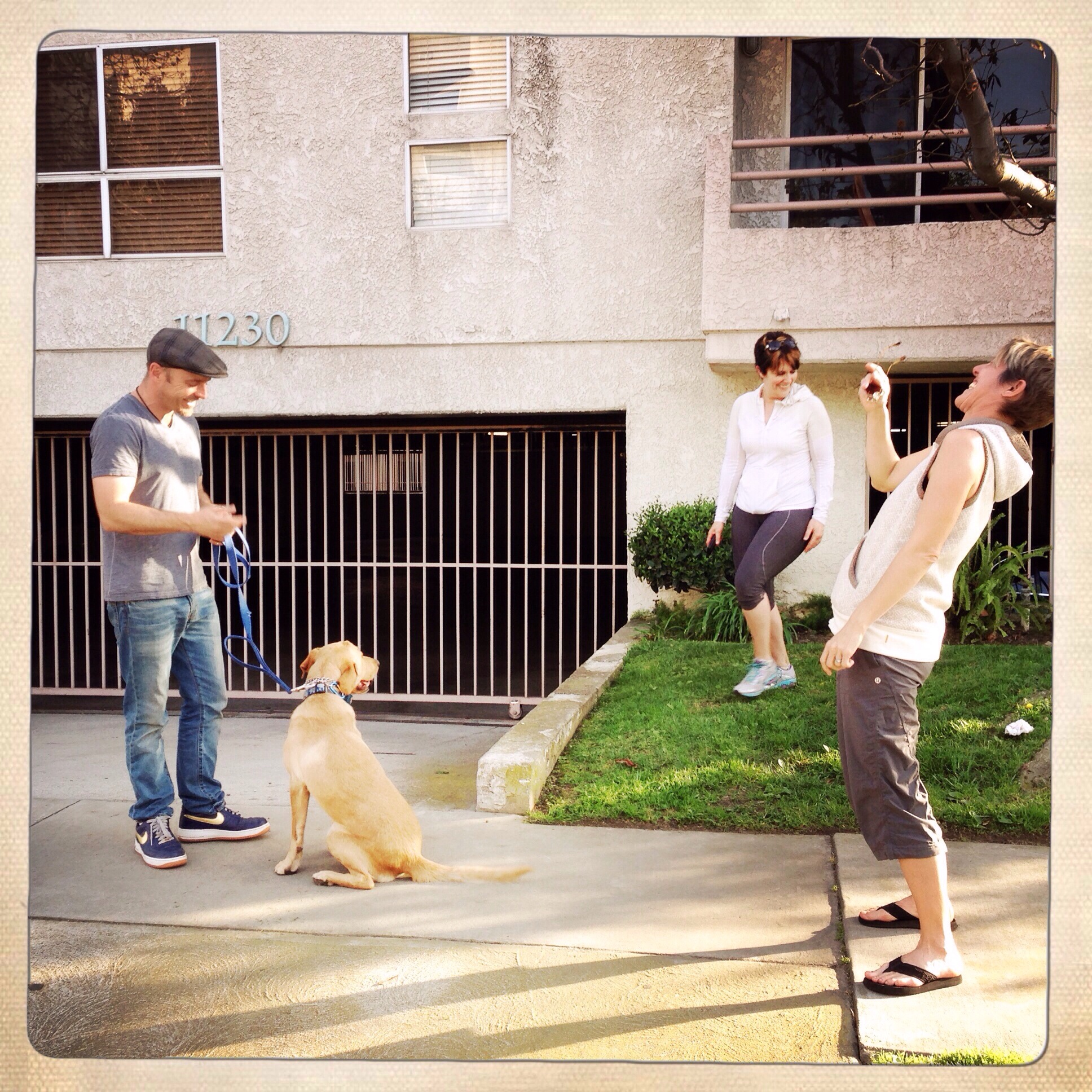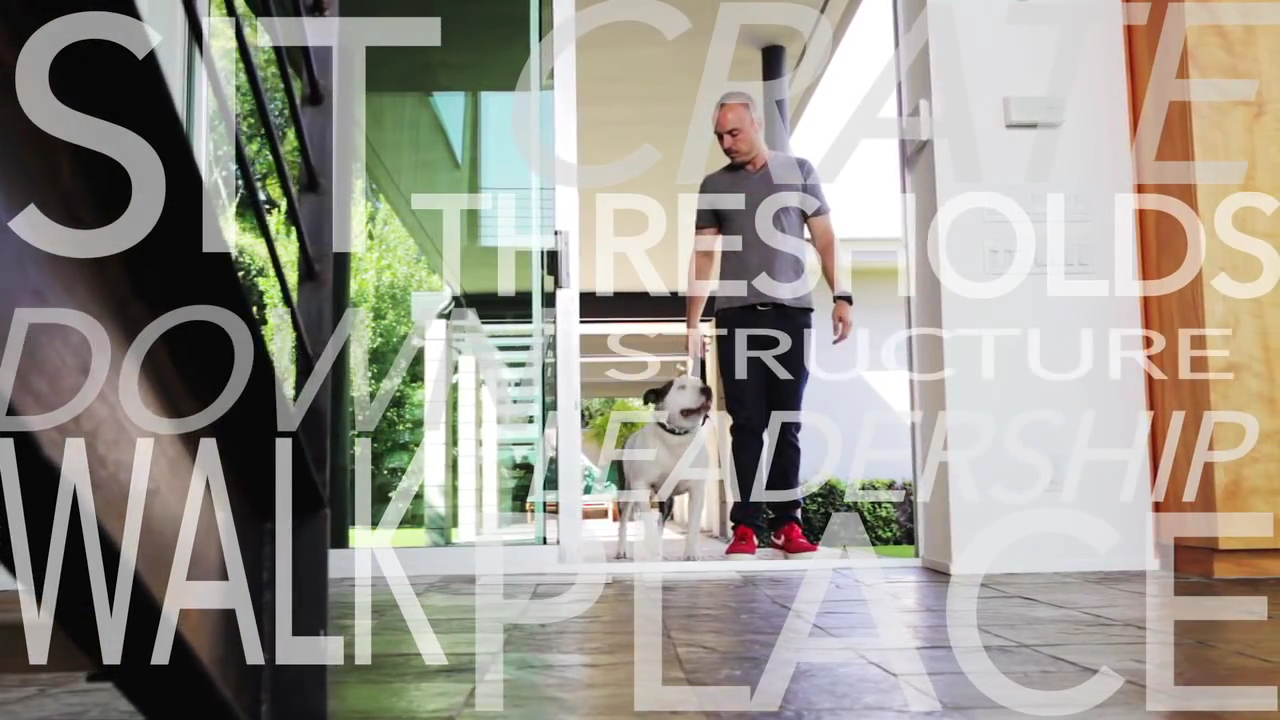The Dog Reactivity Handbook!
 By Sean O'SheaOftentimes I see dog owners allowing tons of monkey business to ensue on walks - their dogs are pulling continuously on leash, darting here and there, marking this and that at their discretion, and all in all being disconnected, disrespectful, and stressed out - but then when their dog sees another dog and starts to freak out, the owner tries to address/correct their dog by vainly tugging on the leash, talking or yelling at them, and getting frustrated.This is the "address the dynamite rather than the fuse syndrome" and, as you can imagine, trying to stop the explosion is way harder than trying to put out the fuse. :) This isn't how you want to go about getting rid of reactivity issues on the walk!The trick to fixing this stuff is actually simple: it's all about setting the proper tone and state of mind before you encounter the target or trigger, not once you're in the heat of battle. Dogs who are allowed to pull you through thresholds, pull on leash, veer to trees and grass to pee and sniff when they choose and, in general, disregard their owner, are being taught that they are in charge. This creates stressed-out, fearful/anxious and/or entitled/empowered nervous wrecks who feel unsafe and overburdened with the responsibility to figure their world out.Not a fun place to be for your dog.And this is where dog reactivity on-leash comes from: Frustration or fear (and sometimes a combo of both!) from a lack of believable guidance. Dogs with believable leaders, enforced rules, and structure are confident, relaxed, and comfortable dogs. And dogs who are confident, relaxed, and comfortable aren't stressed and reactive! :)So let's have a look at a few very simple steps to change the dynamic of stressed and reactive into one of calm and cool.Here's your no monkey-business/reactivity/stress/anxiety prescription:1) Dog waits patiently at thresholds (with zero pulling) for permission to move through. (Watch my "Thresholds" video HERE.)2) Keep the leash short but not tight, always leaving a small amount of play. The short leash helps you keep your dog out of trouble AND allows you to know the instant he becomes disconnected. (Watch my "Walk" video HERE.)3) Oftentimes a firmer conversation/correction for bad behavior/poor choices at the top of the walk will set the tone for a much more respectful and deferential walk. Setting the tone with a firmer consequence for a smaller infraction can be counter-intuitive but highly effective.4) Never use constant pressure to hold your dog back from pulling. Instead you use corrective leash pops with instant release to give your dog information and allow him to be responsible to hold himself in position. Let your dog tell you the right level of leash pop needed. If you pop at a level two and the behavior persists, you're likely using too mild of a correction, so try a level four. Again, let your dog tell you what works.5) If leash pops aren't breaking through and your dog is continuing to be intense and pulling, brisk 180's when your dog gets out in front of you (walking the opposite direction while holding the leash firmly to your chest with two hands) can be a very helpful conversation. Always only use as much pressure as needed. Helpful video HERE!6) Never allow pulling to trees/grass/flowers etc for marking. Instead you release your dog to pee and sniff when you decide. It makes no sense to your dog if you allow him to pull and disregard you 90% of the time, and then expect him to listen during the 10% when it matters to you most.7) Manage and cultivate a healthy/positive state of mind by using the leash pops to address/correct your dog at the split second he begins to escalate or become excited when he sees or hears a dog. Do not wait for the explosion - correct your dog when they are at a 1, 2, or 3 and you will never see a 7, 8, 9, or 10!8) Use space as a buffer with oncoming dogs. Don't put your dog into "the pressure cooker" with another dog. The closer your dog gets to another dog the more the pressure increases. If your dog is nervous - like most reactive dogs are - the closer you get the less safe he feels. If your dog is bratty and excited, the closer you get, the more his frustration/excitement increases. In either case the less the space the harder it is for you and your dog to be successful. (Note: Super naughty, spazzy, bratty, reactive dogs coming towards you need more space than sedate and relaxed dogs do.9) Focus on creating polite, courteous, and relaxed behavior at all times, and this will become your dog's default state.Remember, if you will proactively create a relaxed, respectful, and stress-free state of mind before the bombs start falling you'll have a very good chance of avoiding the explosions of reactivity altogether. :)______________CONNECT WITH US ON Facebook, Twitter, Instagram, YouTube for more training insights, tips, a free weekly Q&A, and community interaction!Click Here to learn more about Sean.Our groundbreaking do-it-yourself training video/PDF training booklet Learn to Train The Good Dog Way: The Foundation is now available for pre-order at a discounted price - click on the picture below to watch the new TEASER video, and click HERE to order your copy!
By Sean O'SheaOftentimes I see dog owners allowing tons of monkey business to ensue on walks - their dogs are pulling continuously on leash, darting here and there, marking this and that at their discretion, and all in all being disconnected, disrespectful, and stressed out - but then when their dog sees another dog and starts to freak out, the owner tries to address/correct their dog by vainly tugging on the leash, talking or yelling at them, and getting frustrated.This is the "address the dynamite rather than the fuse syndrome" and, as you can imagine, trying to stop the explosion is way harder than trying to put out the fuse. :) This isn't how you want to go about getting rid of reactivity issues on the walk!The trick to fixing this stuff is actually simple: it's all about setting the proper tone and state of mind before you encounter the target or trigger, not once you're in the heat of battle. Dogs who are allowed to pull you through thresholds, pull on leash, veer to trees and grass to pee and sniff when they choose and, in general, disregard their owner, are being taught that they are in charge. This creates stressed-out, fearful/anxious and/or entitled/empowered nervous wrecks who feel unsafe and overburdened with the responsibility to figure their world out.Not a fun place to be for your dog.And this is where dog reactivity on-leash comes from: Frustration or fear (and sometimes a combo of both!) from a lack of believable guidance. Dogs with believable leaders, enforced rules, and structure are confident, relaxed, and comfortable dogs. And dogs who are confident, relaxed, and comfortable aren't stressed and reactive! :)So let's have a look at a few very simple steps to change the dynamic of stressed and reactive into one of calm and cool.Here's your no monkey-business/reactivity/stress/anxiety prescription:1) Dog waits patiently at thresholds (with zero pulling) for permission to move through. (Watch my "Thresholds" video HERE.)2) Keep the leash short but not tight, always leaving a small amount of play. The short leash helps you keep your dog out of trouble AND allows you to know the instant he becomes disconnected. (Watch my "Walk" video HERE.)3) Oftentimes a firmer conversation/correction for bad behavior/poor choices at the top of the walk will set the tone for a much more respectful and deferential walk. Setting the tone with a firmer consequence for a smaller infraction can be counter-intuitive but highly effective.4) Never use constant pressure to hold your dog back from pulling. Instead you use corrective leash pops with instant release to give your dog information and allow him to be responsible to hold himself in position. Let your dog tell you the right level of leash pop needed. If you pop at a level two and the behavior persists, you're likely using too mild of a correction, so try a level four. Again, let your dog tell you what works.5) If leash pops aren't breaking through and your dog is continuing to be intense and pulling, brisk 180's when your dog gets out in front of you (walking the opposite direction while holding the leash firmly to your chest with two hands) can be a very helpful conversation. Always only use as much pressure as needed. Helpful video HERE!6) Never allow pulling to trees/grass/flowers etc for marking. Instead you release your dog to pee and sniff when you decide. It makes no sense to your dog if you allow him to pull and disregard you 90% of the time, and then expect him to listen during the 10% when it matters to you most.7) Manage and cultivate a healthy/positive state of mind by using the leash pops to address/correct your dog at the split second he begins to escalate or become excited when he sees or hears a dog. Do not wait for the explosion - correct your dog when they are at a 1, 2, or 3 and you will never see a 7, 8, 9, or 10!8) Use space as a buffer with oncoming dogs. Don't put your dog into "the pressure cooker" with another dog. The closer your dog gets to another dog the more the pressure increases. If your dog is nervous - like most reactive dogs are - the closer you get the less safe he feels. If your dog is bratty and excited, the closer you get, the more his frustration/excitement increases. In either case the less the space the harder it is for you and your dog to be successful. (Note: Super naughty, spazzy, bratty, reactive dogs coming towards you need more space than sedate and relaxed dogs do.9) Focus on creating polite, courteous, and relaxed behavior at all times, and this will become your dog's default state.Remember, if you will proactively create a relaxed, respectful, and stress-free state of mind before the bombs start falling you'll have a very good chance of avoiding the explosions of reactivity altogether. :)______________CONNECT WITH US ON Facebook, Twitter, Instagram, YouTube for more training insights, tips, a free weekly Q&A, and community interaction!Click Here to learn more about Sean.Our groundbreaking do-it-yourself training video/PDF training booklet Learn to Train The Good Dog Way: The Foundation is now available for pre-order at a discounted price - click on the picture below to watch the new TEASER video, and click HERE to order your copy!

